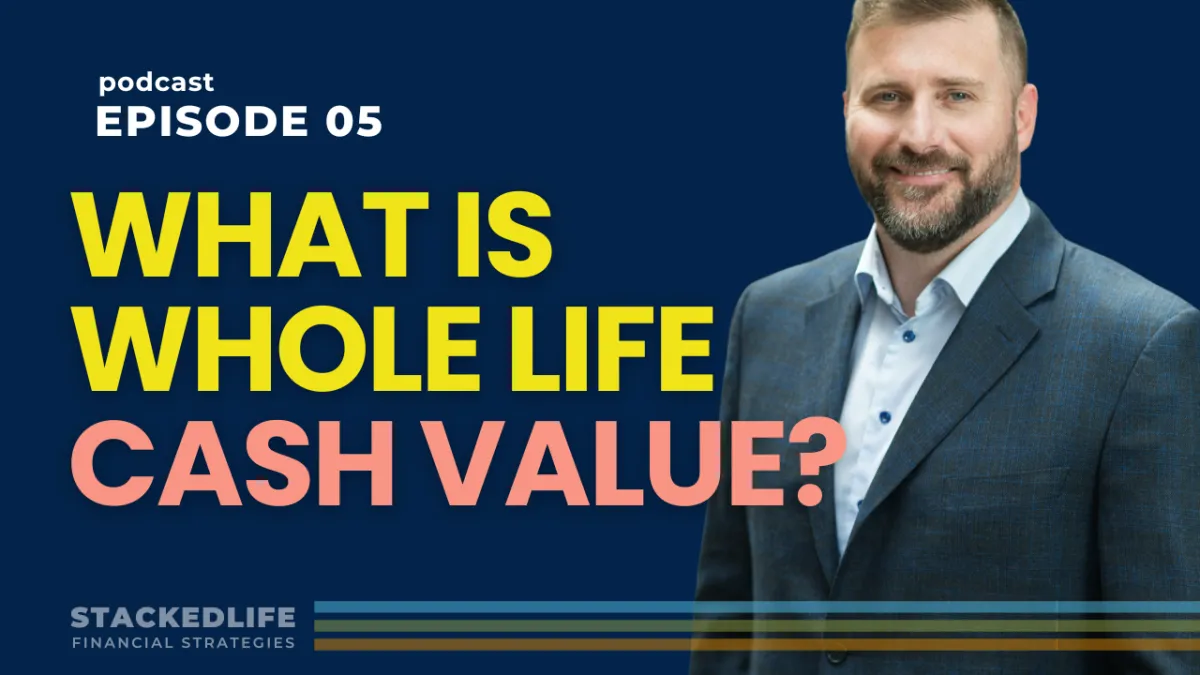
Understanding Whole Life Insurance Cash Value
Would you rather watch or listen to this article instead? You can find it on YouTube or your fave podcast player.
Think about buying a house - you make monthly payments and build equity over time. But what if you could build equity that was guaranteed to grow every single year, couldn't drop in value, and you could access it whenever you needed it? That's precisely what happens with whole life insurance cash value. While most people wouldn't bat an eye at wanting to buy a house, mention buying whole life insurance and they lose their minds. Let's put some of that noise to bed and understand what whole life insurance cash value is.
The Real Estate Analogy:
Let's start by comparing term insurance and whole life insurance using real estate as an example. Term insurance is like renting an apartment - you make payments over time, but when you move out (or the term expires), you don't get anything back. It's a pure expense.
Whole life insurance, on the other hand, is like buying a house. Every premium payment you make builds equity in the policy. Just as mortgage payments gradually build your ownership stake in a home, premium payments build your equity in the life insurance policy. The key difference? This equity (called cash value) is guaranteed to grow every year and can never decrease in value like real estate can.
Technical Definition:
Describing cash value as the "equity" in a whole life insurance policy is fine because it's easy to understand. It's correct as well. However, to be more precise, cash value (technically called cash surrender value) is the net present value of the future death benefit, less any future premium payments. In simpler terms, it's the amount the insurance company guarantees to pay you if you ever decided to surrender the policy. Just like equity in a house represents what you'd get if you sold it, cash value represents your guaranteed "cash out" of the policy's value.
What makes whole life insurance particularly powerful is that it's considered a cash-equivalent asset. The equity you build has real economic value that's recognized not just by the insurance company but also by other financial institutions.
The Death Benefit Connection:
A critical point often misunderstood is that the cash value of a whole life insurance policy isn't separate from the death benefit. In fact, it's derived from it. When advisors discuss minimizing death benefit to maximize cash value, they sometimes misunderstand what is happening and why this builds more cash value in the policy's early years. The death benefit is what makes all the guarantees possible through actuarial math.
Insurance companies can offer these guarantees because they can accurately predict, through the law of large numbers, when death benefits will be paid. This predictability is what allows them to guarantee both the death benefit and the cash value growth.
Growth Components:
Cash value grows through two main components:
1. Guaranteed Growth:
While people often ask about the interest rate, it's more complex than that. The growth is based on actuarial calculations that consider your age and health. What's important is that this growth is guaranteed - your cash value can only increase, never decrease.
2. Non-Guaranteed Dividends:
The board of directors at mutual insurance companies declares dividends annually. While not guaranteed, many top mutual insurance companies have consistently paid dividends for over 150 years, even through the Great Depression. Once a dividend is paid and added to your policy, it becomes part of your guaranteed values, effectively improving your guaranteed ledger each year.
Total growth typically falls in the 3-5% range, net of fees, taxes, and commissions (meaning these costs are accounted for in the 3-5%, not hidden). While this might not sound spectacular compared to potential stock market returns, remember that this growth is guaranteed, tax-advantaged, and comes with all the other benefits of whole life insurance.
We always say whole life insurance is not an investment. But it ain't no slouch either.
To get a detailed financial analysis of the capital equivalent returns of whole life insurance, sign up for my free mini-course with 1.5 hours of video content, Supercharge Growth by Adding Financial Certainty.
Accessing Your Cash Value:
One common misconception is that you can't access your cash value for years. This isn't true. You can access your cash value as soon as you build it up (usually with a minimum of around $500 or so). The primary way to access cash value is through policy loans, which allow you to use your money while it continues growing.
Think of it like this: banks pay depositors to use their money, which they then lend to borrowers at a higher rate. With whole life insurance, you can use your cash value as collateral to borrow from the insurance company and deploy that capital for other opportunities, all while your policy continues growing uninterrupted.
Common Misconceptions:
Beyond the "can't access it" myth, another common misconception is that the insurance company keeps your cash value when you die. This shows a fundamental misunderstanding of how cash value works. Going back to our real estate analogy - when you sell a house, you don't get both the sale price AND your equity. The equity is part of the sale price. Similarly, cash value is part of, not separate from, the death benefit.
But this demonstrates the "living benefits" of whole life insurance. You can use the "equity" in your policy all along the way while you're still alive! How could that possibly be considered a bad thing?
Learn more:
Listen to this podcast episode on YouTube or at StackedLifePodcast.com
Want to learn more about how whole life insurance cash value could fit into your financial picture? Schedule a free consultation about implementing these strategies in your own life.

